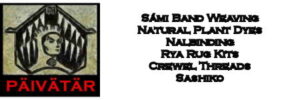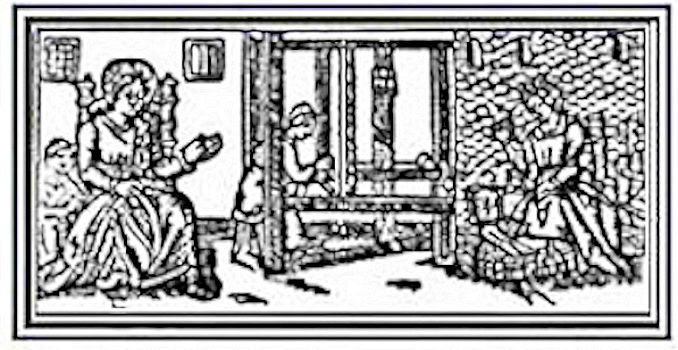A reader asked this question:
Pop Goes the Weasel – Is this a Spinning song?
I hadn’t heard of this before so I did a bit of research. Here are some references to more information about this song.
All around the mulberry bush
The monkey chased the weasel.
The monkey thought ’twas all in fun.
Pop! goes the weasel.
A penney for a spool of thread,
A penney for a needle.
That’s the way the money goes.
Pop! goes the weasel.
Up and down the City Road,
In and out of the Eagle,
That’s the way the money goes.
Pop! goes the weasel.
Half a pound of tuppenney rice,
Half a pound of treacle,
Mix it up and make it nice,
Pop! goes the weasel.
Bulletin Board Post
“A weassel was an iron used by London tailors, who popped their weassel when they were short of money.” Bob, Aug. 26/2000
Bulletin Board Post
In another post by Franbo, Aug. 26
The rhyme was started by hatmakers who pawned their hatmaking tool in order to get some money
World Wide Words
In this article about Pop Goes the Weasel, the phrase comes from an advertisement by Boosey and Sons of 1854, where a new country dance is introduced by her Majesty Queen Victoria.
Additional words were added to the song.
Queen Victoria’s very sick,
Prince Albert’s got the measles.
The children have the whooping cough,
And pop! Goes the weasel
There is a wide variety of opinion on this song. Here are some more posts from our Discussion Forum. If you know more about this song, please let us know by posting a note in our Forum.
Is this a Spinning Song? – Forum Discussion
“I learned a couple years ago that the floor standing skeiners that have a screw on the inside and a piece of wood attached are called “weasels.” After so many turns of the skeiner, the screw will have pushed the slat of wood far enough for it to pop out and make that popping sound that let you know you had wound ‘X’ number of yards. I don’t know why it was called a weasel, though.”
Original post by Berna
Firstly, the Eagle Pub still exists in The City Road in London. I’m English, and sometimes have to visit that part of London, and go past it when I do.
Secondly, I’d always been told that a weasel was a special type of small flat iron used in the manufatcuring of top hats. (You might call them opera hats in the states) Whistle and Flute is indeed rhyming slang for suit, and both best clothes and tools of the trade were pawned ( or popped) for extra cash, so it could be either. But I’ve never heard of a weasel being anything to do with spinning equipment.
Thirdly, there is another pub just up the City Road from the Eagel called ” The Stick and Weasel”, which refers to another line in the version of the rhyme I know ‘Every time that I go out, The weasel’s on the tabel, Take an stick and knock it off, Pop goes the Weasel” . I think the pub name came after the song, but it’s there now!!
Finally, if Susan is interested, her college linbrary probaly has books with copies of the works of George Cruikshank – a victorain artsist much loved by the temperence movement who showed the awful results of drink in pictures and cartoons, and so these might be useful period ilustrations for her talk, showing what happened of you popped your weasel and went into the Eagel too often!!
Hope this helps Susan – its nice to know that our quaint British traditions are studied in colleges in the states, and i hope her project goes well.”
Original Post by Susanne
The song Pop goes the Weasel derives from the counter at the back of the yarn reel or clock reel or wool reel depending on where you are from. These reels all have a 2 yard circumference and are designed to measure wool knots. These are 80 yards or 40 turns. By the way there are 7 knots in a skein, or 560 yards. Measure what we call a skein of knitting worsted today and chances are it is still very close!!
These measurements derive from England and we have all recognized that English units of measurement are a little bit strange. I have even heard that there was someone in the 17th century who was appointed to check and make sure that reels were exactly 2 yards in circumference so that no one was cheated.
The song was developed as I understand it to keep children amused while they were reeling yarn off the bobbins and ont the reel. According to an elderly English lady that I met several years ago there may be 40 verses to the song–which would make sense. (That may be the only logical thing about all of this)
As another aside on this subject; A reel measuring 1 and 1/2 yards was for measuring linen or flaz which is measured in leas. They are a whole other story!!
Original Post by B. Flexner
My weasel is hand carved oak. The screws inside the clock box show the knife marks. The skeining wheel is 90 inches in circumfrence and goes click on every revolution and on the 120th rev., goes pop. On the screw that extends even with the front of the box there is a right angle bent nail that shows where the start is, and points to 900. As this screw turns the nail shows where you have gotten to. No, there is only the start mark, not quarters or half.
On singles i can get 120+ revolutions with fine wool and fine spin. I bought this weasel last summer in Lincoln, NM from a lady who was selling a lot of her family antiques. It is a treasure. The grandson likes to turn it and count the clicks. He will start to kindergarden in 2 years and can count now to 120 so he can hear the pop.
Would like to have all the verses to the song. Am sure too that it refers to a lot of things medieval English.
 LONGTHREAD MEDIA VIDEO
LONGTHREAD MEDIA VIDEO
 LONGTHREAD MEDIA SUBSCRIPTIONS
HANDWOVEN MAGAZINE
PIECEWORK MAGAZINE
SPINOFF MAGAZINE
LEARN LONGTHREAD MEDIA
PAIVATAR HANDMADE
LONGTHREAD MEDIA SUBSCRIPTIONS
HANDWOVEN MAGAZINE
PIECEWORK MAGAZINE
SPINOFF MAGAZINE
LEARN LONGTHREAD MEDIA
PAIVATAR HANDMADE
 Paivatar on YouTube
Visit my YouTube channel for how-to craft videos.
Paivatar on YouTube
Visit my YouTube channel for how-to craft videos.
Or Please visit my Channel on Rumble for more how-to videos.
https://rumble.com/Paivatar
LIVE STREAMS - Paivatar Studio
KICK
TWITCH MAKERS&CRAFTING
YOUTUBE
Categories: HAND SPINNING, HAND WEAVING, Mythology and Stories


